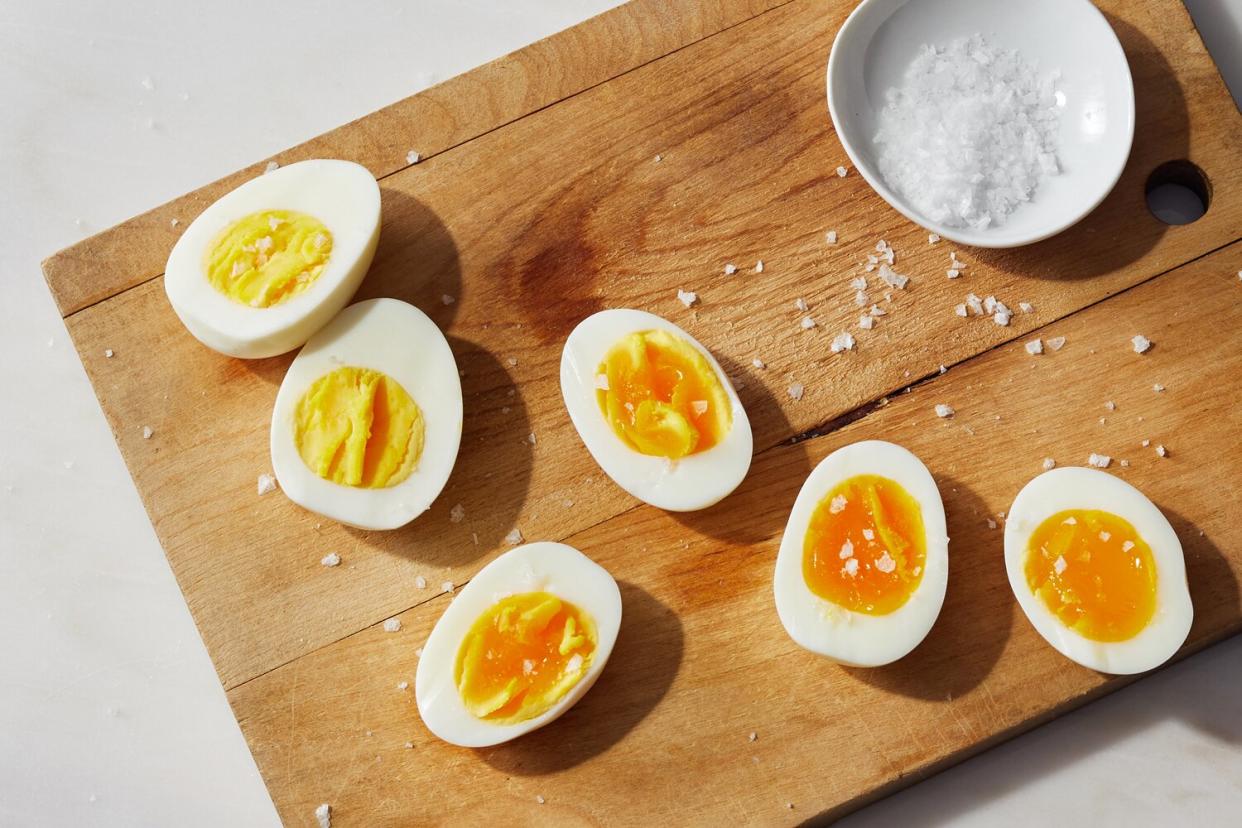The Smart Cook's Guide to Making Hard-Boiled Eggs—Including the One Step You Should Never Skip

Bryan Gardner
TABLE OF CONTENTS
On This Page
The Best Eggs to Use
Secret to Success
Cooking Tips
Peeling Tricks
The perfect hard-boiled egg is endlessly adaptable and always delicious—whether it serves as a quick breakfast, protein-filled snack, or the base of homemade egg salad. And while there is no shortage of ways to serve hard-boiled eggs, you first need to make them.
So, what's the best technique for cooking them? We're sharing time-honored tips that will take your hard-boiled eggs from average to excellent.
Related: How to Store Eggs, Including Why They Should Always Be Refrigerated
Don't Use the Freshest Eggs
Fresher is generally better, but not for hard-boiled eggs (or deviled eggs, for that matter). "Older eggs, or eggs that aren't as fresh, peel better," says Thomas Joseph, host of our Kitchen Conundrums video series and culinary director of Martha Stewart Living Omnimedia.
If you are like our founder, you might be using farm-fresh eggs. If so, add a drop of white vinegar to the boiling water as the eggs cook to create an easy-release shell.
Always Bring Eggs to Room Temperature First
Our go-to method starts with room temperature eggs. This simple, essential step (don't skip it!) makes a world of difference—and is why you should always bring any kind of protein, whether it be steak, salmon, or eggs, to room temperature before cooking.
The reason? When you add a very cold protein to a very hot pan or, in this case, a pot of boiling water, the protein goes into shock and can become tough or rubbery. By bringing eggs to room temperature before hard cooking them, you'll ensure that the whites stay tender. Plus, sticking to this step makes your final product easier to peel.
If you're short on time—and can't wait the 30 minutes it takes for the eggs to come to room temperature after you take them out of the refrigerator—you can quickly soak them in a bowl of warm water for five to 10 minutes before cooking them.
How to Cook Hard-Boiled Eggs
Once your eggs are at room temperature, they're ready to be boiled.
Carefully place the eggs in a large saucepan and cover them with cold water—there should be about one inch of water over the eggs. Bring the water to a boil over medium heat.
Next, work to maintain the water's temperature. "The true kitchen nerd's way to do it is to maintain the water at precisely 170℉," says Martin Bucknavage, senior food safety associate at Penn State University Department of Food Science. "As soon as the water boils, turn off the heat, cover the pot, and set a timer for 12 minutes—this is the case whether you're cooking one large egg or a full dozen."
If you're cooking jumbo eggs, add another 2 minutes to time the eggs sit in the hot water.
If you get a crack in the egg during cooking process, eat that egg sooner rather than later, says Bucknavage.
Soft and Medium-Boiled
For soft- and medium-boiled eggs, reduce the cook time. Jammy eggs only need to cook for two to four minutes. As for medium-boiled eggs, six to eight minutes will be sufficient.
Be gentle when peeling both soft- and medium-boiled eggs as they are (you guessed it!) softer and therefore a bit more fragile than their hard-boiled counterparts.
How to Peel Hard-Boiled Eggs
Cooking hard-boiled eggs is the easy part. For many cooks, the bigger challenge involves cracking and removing the shells.
Tap and Roll
The technique we turn to time and again involves soaking the eggs in an ice water bath for five minutes, then peeling. And when it comes to peeling, there's one method that works well: Simply tap the top and bottom of the egg on a board or countertop and then gently roll the egg with the palm of your hand to begin to crack the shell. Don't use too much force, though, or you risk squishing the cooked egg.
Peel Hot Under Cold Water
Chef and award-winning food writer Kenji Lopez-Alt prefers an alternate technique: He recommends peeling hot eggs under cool running water, explaining that when eggs are hot, the connection between the membrane and egg white is weaker, making it easier to remove the shell. Plus, the cold water makes it less painful to touch the hot eggshells.

